Who should the New York Jets pick if their main focus is to improve the team in 2024?
With their moves in March, the New York Jets set themselves up perfectly for April. There isn’t a glaring, must-fill need on the roster going into the draft. This gives them the flexibility to do just about whatever they want with their first-round pick.
Of course, their decision will likely be limited to three positions: wide receiver, offensive tackle, and tight end (well, Brock Bowers).
In terms of long-term value, all three options are on the table. While the Jets have each of these positions filled in the short term, they will all be vacated in 2025 when Tyron Smith, Morgan Moses, Mike Williams, and Tyler Conklin see their contracts expire. So, when it comes to deciding which position is the best long-term choice, there is no clear answer. It simply comes down to who the Jets view as the best prospect.
But what if we’re solely talking about Year 1 impact? Which position is the best target if the Jets’ main goal is to find a player who can improve their chances of winning the Super Bowl this season?
Let’s evaluate the potential impact that all three positions should be expected to have on the Jets in 2024 alone. To do this, we’ll break down two factors for each position:
- The historical Year 1 production of first-round picks at that position
- The expected playing time and role of that position in the Jets’ offense as it is currently constructed
Tight end
Historical Year 1 production
First-round tight ends are quite rare, so we’ll have to go pretty far back to pull a useful sample size.
There have been 26 tight ends drafted in the first round since 2000. Here are their average Year 1 stats:
- 13.0 games
- 8.3 starts
- 33.5 receptions
- 385.8 yards
- 2.3 touchdowns
Not inspiring. Among tight ends in the 2023 season, 34 receptions would rank 27th, 386 yards would rank 26th, and 2 touchdowns would tie for 27th.
The numbers are better if you only look at the last 10 years (9 TEs drafted), but not by much:
- 14.6 games
- 9.0 starts
- 41.4 receptions
- 508.8 yards
- 2.9 touchdowns
Among tight ends in the 2023 season, 41 receptions would rank 24th, 509 yards would rank 19th, and 3 touchdowns would tie for 18th.
Even if you isolate tight ends who were picked in the top 10 (prospects who were probably rated similarly to Bowers), it’s no different. Here are the average Year 1 stats among 16 tight ends drafted top-10 since 1961:
- 13.2 games
- 9.6 starts
- 28.6 receptions
- 392.6 yards
- 2.9 touchdowns
Three of the four 500-plus-yard rookie seasons from top-10 tight ends occurred pre-1981, so it’s not as if that data sample is dragged down by including players from bygone eras. It’s actually raised up by them. In fact, until Kyle Pitts’ 1,026-yard season in 2021, each of the last six tight ends drafted top-10 (a span ranging from 1995 to 2019) failed to reach 400 yards in their rookie seasons. Pitts was the first top-10 tight end to hit 500 yards as a rookie since Junior Miller in 1980 (584), and the first to hit 800 since Charle Young in 1973 (854).
Obviously, it’s fair to say that Bowers is likely graded by NFL teams as a better prospect than most of the players in these data samples. He is widely viewed as one of the best tight end prospects of all time. However, that brings us to a trap that teams and analysts often fall into when evaluating draft prospects, one that was broken down beautifully by The Ringer’s Sheil Kapadia: The “This Guy’s Different” trap.
Basically, this is the phenomenon of teams thinking they know better than the historical data. Kapadia explained it perfectly:
“We have pretty compelling evidence to suggest that evaluating tight end prospects is especially challenging. Nine tight ends have been selected in the first round of the past 10 drafts. Those players have combined for zero All-Pro nods and one 1,000-yard season. Only one—David Njoku of the Cleveland Browns—got a second contract from the team that drafted him.”
“Yet every draft season, we can’t help it. We convince ourselves that the next tight end prospect will be the exception. We’re seeing it this year with Georgia’s Brock Bowers. Let me be clear: I like Bowers! Fun player, breaks tackles, YAC monster. I hope he has a long, fruitful career in the NFL. But if I were a GM, I would acknowledge that the entire league has had trouble identifying who the best tight end is in any given draft class for the past 30-plus years. I would be hesitant to take Bowers with a high first-round pick, even while acknowledging that he could be the one that hits. Again, the draft is about making smart bets. And we have a long history that tells us betting on a tight end early does not yield the same upside as other positions. For the most part, the best players at the position have been taken later in the draft (Travis Kelce in the third round, George Kittle in the fifth, Mark Andrews in the third).”
“The bottom line is that you have to be careful about drafting players whom you believe will be exceptions. The tight end thing is just one example. But there could be other things too, like ignoring a corner’s arm length or a wide receiver’s 40 time, which might fall below the fifth percentile of what we typically see from those positions.”
“I’m not saying that you should never take those guys. But if history tells us that a prospect with a specific physical or production profile doesn’t typically succeed, you need to have a really good explanation for why the next guy will be the exception. And even then, the juice might not be worth the squeeze. You’ll miss out on some good players, no doubt. But you’ll also probably be making higher-percentage bets.”
Great article, check it out.
Simply put, there is a strong precedent for TEs not being productive in Year 1. The position’s college-to-NFL adjustment curve is typically viewed as one of the most difficult of any position, and the numbers back that up.
Bowers is undoubtedly talented enough to buck that trend and have one of the best rookie seasons ever for a tight end. But we shouldn’t be arrogant enough to think we know better than the historical data and claim it is likely he will do that just because he seems like an outlier prospect at this point in time. Even some of the first-round tight ends who eventually became stars didn’t have standout rookie seasons:
- Tony Gonzalez (1997): 33 receptions, 368 yards, 2 TD (16 games)
- Dallas Clark (2003): 29 receptions, 340 yards, 1 TD (10 games)
- Vernon Davis (2006): 20 receptions, 265 yards, 3 TD (10 games)
- Greg Olsen (2007): 39 receptions, 391 yards, 2 TD (14 games)
- T.J. Hockenson (2019): 32 receptions, 367 yards, 2 TD (12 games)
Bowers should have a very good chance of becoming a perennial Pro Bowl tight end in the future. However, his common billing as the Jets’ best option for “instant impact” does not seem to be an accurate claim based on history. It’s very rare for tight ends to be major difference-makers as rookies, even if they are picked in the first round. If Bowers instantly establishes himself as an elite tight end in his rookie season, he’d be a major exception.
Role in Jets offense
While a tackle would be a backup and a wide receiver would either be the second or third player at his position, Bowers has a chance to step right in and be the Jets’ top tight end.
It’s tough to predict how Bowers’ Year 1 playing time and target share would compare to Tyler Conklin‘s. It probably depends on how Bowers looks throughout training camp and the preseason. Given his draft stock, I don’t think the Jets would hesitate to make Bowers their No. 2 target in the entire offense if he immediately looks like the player many people believe he can become – perhaps seeing as many as 6-7 targets per game. If his blocking also looks good, he could demand over 70% of the snaps. Conklin played 70% as the Jets’ TE1 last year.
However, if he undergoes the growing pains that the majority of tight ends do, Bowers and Conklin could end up seeing a split role in terms of snaps and targets. That would likely leave Bowers with somewhere around 40-50% of the snaps. C.J. Uzomah was playing 41% of the Jets’ snaps as their TE2 last year before he was benched. Bowers would get vastly more targets than Uzomah, of course – I could see him getting 4-5 targets per game in this role whereas Uzomah barely got one per game. Bowers’ slot versatility also may allow him to push higher in the snap column, perhaps into the 50s or even low 60s. Still, to earn a role (in terms of target volume and snaps) that will allow him to fully realize his star potential, he has to show the Jets he can offer the complete package right away.
Bowers would still make an impact in a complementary role – just not the Day 1 superstar type of impact that many people are expecting him to provide as a top-10 pick. He will certainly be a useful weapon this year if selected by the Jets, but for him to be anything more than a mid-level producer for the tight end position, he would have to place himself in extremely rare company among tight ends.
Ultimately, it’s impossible to know what Bowers’ role would be until the Jets get to evaluate him throughout the summer.
Wide receiver
Historical Year 1 production
Here are the average Year 1 stats for first-round wide receivers since 2014:
- 12.9 games
- 9.2 starts
- 47.8 receptions
- 639.7 yards
- 4.0 touchdowns
Among wide receivers in the 2023 season, 48 receptions would rank 53rd, 640 yards would rank 50th, and 4 touchdowns would tie for 41st. So, this is low-end WR2 production.
After a rough ride throughout the late 2010s, we’ve seen a run of tremendous Year 1 impact from wide receivers since the turn of the decade. Here are the average Year 1 stats for first-round wide receivers since 2020:
- 14.3 games
- 10.9 starts
- 57.6 receptions
- 797.8 yards
- 4.3 touchdowns
Among wide receivers in the 2023 season, 58 receptions would rank 45th, 798 yards would rank 35th, and 4 touchdowns would tie for 41st.
On average, first-round receivers in the 2020s have produced like mid-level WR2s in their rookie years. But the ceiling is even more impressive.
Of the 23 wide receivers drafted in the first round since 2020, five of them hit at least 1,000 yards (22%), eight hit at least 900 (35%), and 11 hit at least 850 (48%). Those are incredible hit rates for Year 1 production. For perspective, 850 yards would have ranked 34th among wide receivers in 2023, meaning about half of first-round wide receivers since 2020 have produced nearly to the level of a low-end WR1 at the minimum.
Since 2010, top-10 wide receivers have been hitting at a tremendous rate. Here are the average Year 1 stats for first-round wide receivers since 2010:
- 13.5 games
- 11.4 starts
- 56.0 receptions
- 775.9 yards
- 5.0 touchdowns
It might not jump out at first, but those numbers are dragged down by a handful of massive duds. The hit rate of top-10 receivers since 2010 is actually remarkable.
Among the 18 top-10 wide receivers since 2010, there was a group of five players who each posted under 418 yards as a rookie (an average of 215 between them). However, each of the other 13 players had at least 865 yards and four touchdowns. That’s 72% of the sample posting at least 865-and-4. On average, those 13 players recorded 72 receptions for 1,030 yards and 7 touchdowns.
That sums up the main theme for first-round wide receivers: They are highly boom-or-bust. The ceiling is incredible, especially in recent years. Guys like Ja’Marr Chase, Justin Jefferson, Garrett Wilson, Chris Olave, Jaylen Waddle, Amari Cooper, Mike Evans, and Odell Beckham Jr. became 1,000-yard receivers immediately. Then you also have guys like John Ross, Kevin White, Josh Doctson, Laquon Treadwell, and N’Keal Harry who did absolutely nothing in their careers.
Overall, though, the ceiling outweighs the floor. When you take a wide receiver in the first round, there is a pretty good shot he will instantly become a star. That is a much different story than tight end, where the chances of getting an instant star have been near zero. Perhaps tight ends offer a slightly higher floor, but the difference in ceiling is immense.
Role in Jets offense
Garrett Wilson is the guy in New York. Nobody will out-target him in 2024. Maybe someone could push him in the future if they’re incredibly special, but it’s not happening in 2024.
However, the door is open for a rookie to take the No. 2 spot in targets if they are great enough. Mike Williams projects to be the Jets’ No. 2 target right now, but as he recovers from an ACL injury in a year where he will turn 30, we don’t know what he is going to have left in the tank. Williams might be at his most effective in a more limited role than he has played in the past.
Plus, even when he’s at his best, Williams is more of a big-play threat than a high-volume target magnet. That style of play could work excellently in an offense where he is surrounded by weapons. I could see a scenario where the Jets draft a rookie receiver who out-targets Williams while Williams’ role is built upon high-upside deep shots on a low volume, where he produces incredibly efficient yards-per-target and touchdowns-per-target rates.
So, there’s a high Year 1 ceiling in the Jets’ offense for a potential rookie wide receiver. He won’t have a shot at the No. 1 role, but due to the uncertainty with Williams’ health and his play style as a big-play threat, a rookie can easily vault into the No. 2 spot in the Jets’ target hierarchy. There is an outcome where a rookie receiver comes in and plays around 70% of the snaps or more.
At the very least, a rookie wide receiver would be No. 3 on the Jets’ depth chart, likely garnering him at least 40% of the snaps. He would have to be quite the bust to not overtake Allen Lazard on the depth chart. And when you consider Williams’ injury history, there is a good shot that, even in a No. 3 role, the rookie would spend a lot of time as the No. 2 receiver, anyway.
Offensive tackle
Historical Year 1 production
Here are the average Year 1 stats for first-round tackles since 2014:
- 13.0 games
- 11.8 starts
- 66.2 overall Pro Football Focus grade
- 5.5 sacks allowed (average sack rate: 1.02%)
- 34.2 total pressures allowed (average pressure rate: 6.4%)
- 7.2 penalties (average penalties per 1,000 snaps: 8.8)
Let’s put those numbers into perspective. In the 2023 season, among 64 qualified tackles (min. 330 pass-blocking snaps), this is where those numbers would rank:
- 66.2 overall PFF grade: 40th of 64 (38th percentile)
- 1.02% sack rate: 46th of 64 (29th percentile)
- 6.4% pressure rate: 42nd of 64 (35th percentile)
- 8.8 penalties per 1,000 snaps: 44th of 64 (32nd percentile)
Overall, the average first-round tackle over the past 10 years has played at the level of a below-average starter in their rookie season. They have not been terrible, but they have been unequivocally beneath the standards of a mid-level starting tackle. Having said that, these numbers would be solid for a backup swing tackle, which is the role New York would be asking a first-round tackle to play. If your backup is better than about one-third of the league’s starters, that’s a great spot to be in.
In the 2023 season, the required overall PFF grade to rank among the top 32 tackles out of 64 qualifiers was 68.5 (that was the mark of 32nd-ranked Jermaine Eluemunor). Among the 36 first-round tackles since 2014, only 11 of them exceeded a 68.5 overall PFF grade in their rookie year while starting at least 10 games. That’s just a 31% chance of getting an average-or-better starter in Year 1.
However, when a rookie tackle does hit the ground running, he’s often a home run. The majority of those 11 guys were instant stars – not merely above average.
In 2023, a 76.6 overall PFF grade was required to rank as a top-16 tackle out of 64 qualifiers. Since 2014, seven of the 36 first-round tackles exceeded the 77.3 mark as rookies: Taylor Lewan, Jack Conklin, Taylor Decker, Ryan Ramczyk, Tristan Wirfs, Rashawn Slater, and Penei Sewell.
That’s seven instant stars out of 36, a 19% rate. That’s similar to the rate of first-round rookie wide receivers to reach 1,000 yards since 2020, which was 22% (5 of 23). Not too shabby.
However, about half of first-round tackles should be expected to experience major growing pains. High sack and penalty totals are a frequent sight.
Of the 30 first-round tackles since 2014 who started at least four games as a rookie, 13 of them (43%) committed at least 10 penalties per 1,000 snaps, a rate that would have ranked bottom-16 among 64 qualifiers in 2023. An equal total of 13 players allowed a sack rate of at least 1.09%, which is the bottom-16 threshold in that category. Seven of the 30 players (23%) hit both of those criteria, meaning they ranked in the bottom quarter of sacks and penalties as a rookie.
It’s not uncommon for future standouts to struggle as rookies despite being picked in the first round. Kolton Miller, Kaleb McGary, Jake Matthews, and Andrew Thomas eventually developed into strong long-term starters after rookie years in which they each allowed at least 49 pressures (a number that would have been sixth-worst among OT in 2023) and had an overall PFF grade below 63.
Role with the Jets
In a perfect world, the Jets would hope their rookie tackle never plays. He’d be sliding into a backup role behind Tyron Smith and Morgan Moses. The Jets obviously want Smith and Moses to start 17 games, even if it means their first-round pick doesn’t see the field as a rookie. This wouldn’t make the pick a waste in the long run, as the tackle would still become a starter next year, but we’re talking about Year 1 impact, and this outcome certainly wouldn’t be the most ideal allocation of resources for a team in win-now mode.
This is the risk the Jets would run by taking a tackle. What if you get to the playoffs, both tackles are healthy, and they stay healthy all the way through? Now, your first-round pick is warming up the bench in the Super Bowl while Rome Odunze or Brock Bowers could have been out there helping you. Considering Tyron Smith has never missed a playoff game despite his chronic regular season woes, this is a plausible scenario.
However, we do not live in a perfect world. Picking an offensive tackle would be a move grounded in reality, a smart usage of foresight to prepare for the inevitable disaster before it happens. The Jets might not have a Super Bowl to worry about if they blow the division lead against Miami in Week 15 because Carter Warren was matched up against Jaelan Phillips on a decisive play.
Let me just tell you the truth right now: Smith and Moses are not combining for 34 starts this season. In a year where every game figures to be crucial for the title-hungry Jets, New York must be prepared for a backup tackle to take the field in a critical moment. It’s a role they need to take seriously, and they haven’t done that yet, making no additions at tackle this offseason outside of Smith and Moses. Addressing it with a first-round pick is a much higher-upside solution to the problem than relying on Carter Warren and Max Mitchell or signing a scrapheap free agent.
The Jets’ rookie tackle would play this year. What nobody can predict is exactly how much he will play. Smith could go down for the year in training camp, leaving the rookie as a 17-game starter. Or, Smith could miss no more than his usual minimum of three games while Moses has another season of perfect health (which he had done in eight consecutive seasons until last year). That would leave the rookie playing less than 20% of the snaps.
Trying to project how many games the tackles will miss is ultimately a silly exercise, but the smartest guess would be to simply go by the averages.
Smith has missed an average of 6.1 games over the past eight seasons. Moses played every game in eight of the past nine seasons, but he missed three last year. He also exited early in multiple games, which ultimately left him playing only 69.2% of Baltimore’s offensive snaps on the year – the equivalent of 11.8 games played with 5.2 games missed. If we say Moses really missed five games last year, that gives him five missed games over the past nine seasons, an average of 0.6 per year. Tack that onto Smith’s 6.1 per year and you get 6.7, which we can round up to seven.
This means the baseline expectation is that the Jets will need seven starts from their backup tackle.
Seven starts make up 41% of the 17-game schedule. Since a starting tackle would be expected to play 100% of the snaps in each game, the rookie tackle should be expected to play 41% of the Jets’ offensive snaps this year. While it’s far from the snap counts New York could get out of Bowers or a wide receiver if they are immediate stars, it’s also very similar to what Bowers or a wide receiver might play if they only perform to the average expectations of first-round picks at their positions.
If Bowers goes through the usual growing pains for a rookie tight end, he could play as little as 40% of the snaps in a TE2/quasi-SWR role behind Tyler Conklin, who would be a more complete tight end in 2024. If Mike Williams stays healthy and the rookie wide receiver looks raw, he could be a WR3 who only plays around 40% of the snaps.
When you really break it down, a rookie tackle’s expected playing time for the Jets is actually not much different than the expected playing time of a tight end or wide receiver in the likely event they are not one of the top-tier performers among first-rounders. Hopefully, if the Jets get Bowers or Odunze/Nabers, they will be a top-tier standout who immediately dominates and commands at least 60-70% of the snaps, and all of those guys have the talent to do that. Realistically, though, we need to go by the historical averages to find a reasonable baseline. And when you do that, it suddenly doesn’t seem that crazy to take a tackle if you’re looking for Year 1 impact.
So, which position is the best for Year 1 impact?
To wrap it up, my main takeaway would be that the Jets should limit their choice to wide receiver and tackle if their goal is Year 1 impact, removing Bowers from the picture.
I can hear the arguments for either wide receiver or tackle – I don’t think the Jets can go wrong with either of those positions as long as they take the right prospect. But in the case of Bowers, the Jets would be going against a brutal history of Year 1 production at the tight end position. While we’ve seen plenty of instant stars at wide receiver and tackle, it just doesn’t happen at tight end. Maybe Bowers can be an exception, but it’s safer to side with history over your faith in one guy.
Despite the popular narrative that Bowers is the Jets’ best option because of his potential Year 1 impact, I would argue the opposite. I think if you take Bowers, it’s for the future, not for right now. I have no doubts about Bowers having the floor of a consistent top-10 tight end in the future, with the ceiling to be the best. With Conklin’s contract expiring, the Jets have a long-term hole to fill at the position. Once he has a year of development under his belt, I can see Bowers becoming a star as soon as 2025. So, long-term, Bowers has a strong argument as the Jets’ best option.
But the Jets are a win-now football team. They made it abundantly clear with their moves in March. Their best shot to win the Super Bowl in the foreseeable future is this year, and they’ve built the team accordingly. With that in mind, taking Bowers and trying to outsmart the long-standing history of measly Year 1 production for tight ends (even those drafted in the top 10) is an unwise choice for the Jets’ current mentality. At receiver and tackle, you get a much higher chance of finding an instant star.
Not to mention, those are far more valuable positions than tight end. The Jets can survive with Jeremy Ruckert as their top tight end in a wild card game against Houston. Can they survive with Carter Warren and Max Mitchell blocking Will Anderson and Danielle Hunter? No. Can they live with Allen Lazard running routes against Derek Stingley? No.
As I said earlier, I won’t argue with anyone on Team Tackle or Team Receiver. Both are great choices. If I had to lean toward one side, though, it’s wide receiver, simply due to the certainty that the player will have at least some impact this year.
There is a chance that a tackle makes little to no impact this year, which is scary for a win-now team. Meanwhile, you know for a fact that the receiver will at least be on the field. Still, though, the odds of Smith missing a considerable chunk of games are high, and the floor of having a hole at tackle is arguably lower than any other position on the Jets’ roster, so the security of adding a talented backup tackle is extremely appealing. Again, I think either position would be a wise pick – I just lean slightly toward wide receiver.
Tackle or wide receiver are the two smartest options if the Jets’ top priority is instant impact. They can take Bowers if they’re thinking long-term, but don’t be shocked if the Jets take Bowers and he doesn’t make the tectonic plate-shifting impact in 2024 that many talking heads think he will, leaving the Jets wishing they had a blue-chip tackle or receiver in a pivotal moment of the season.

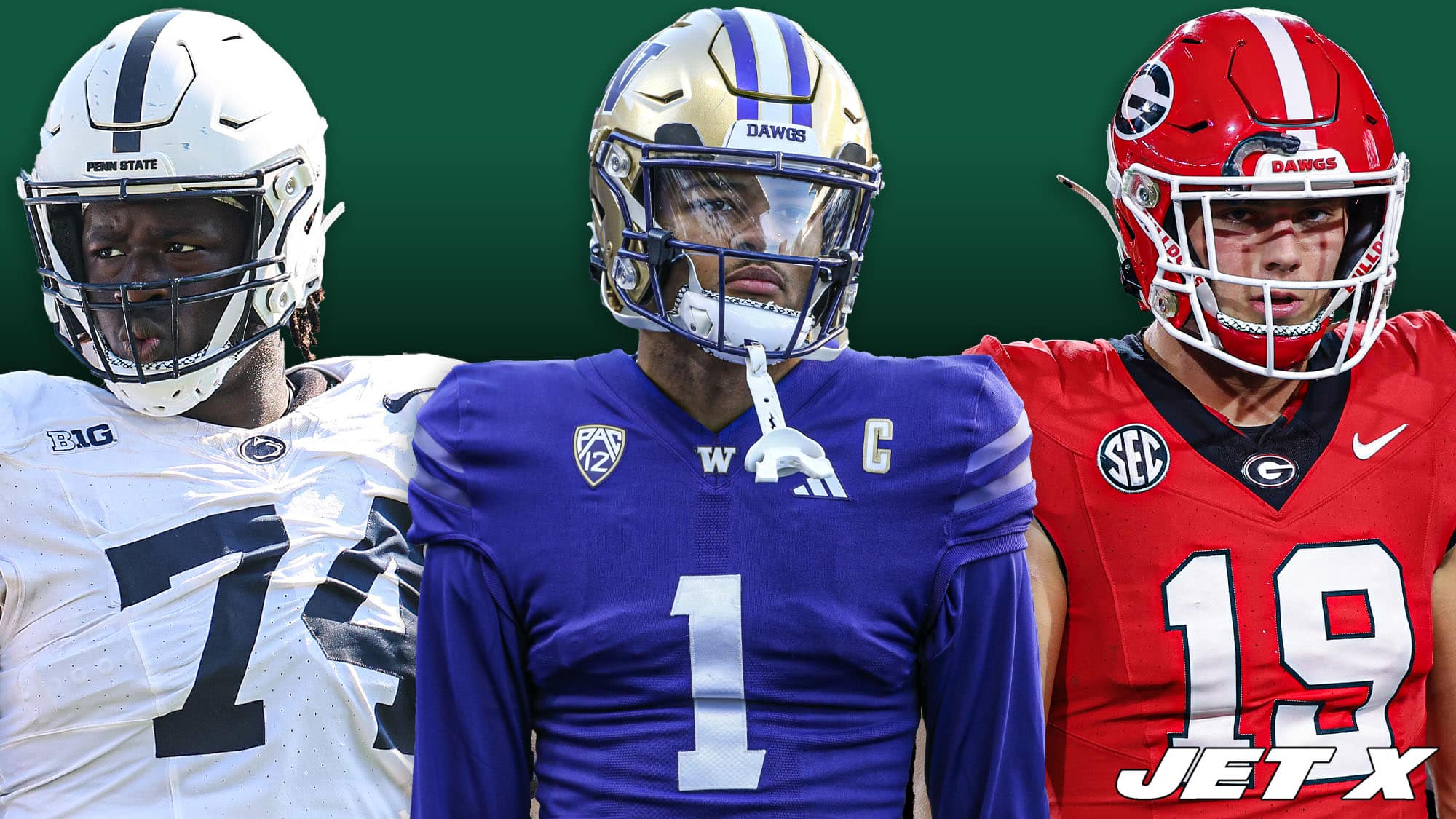




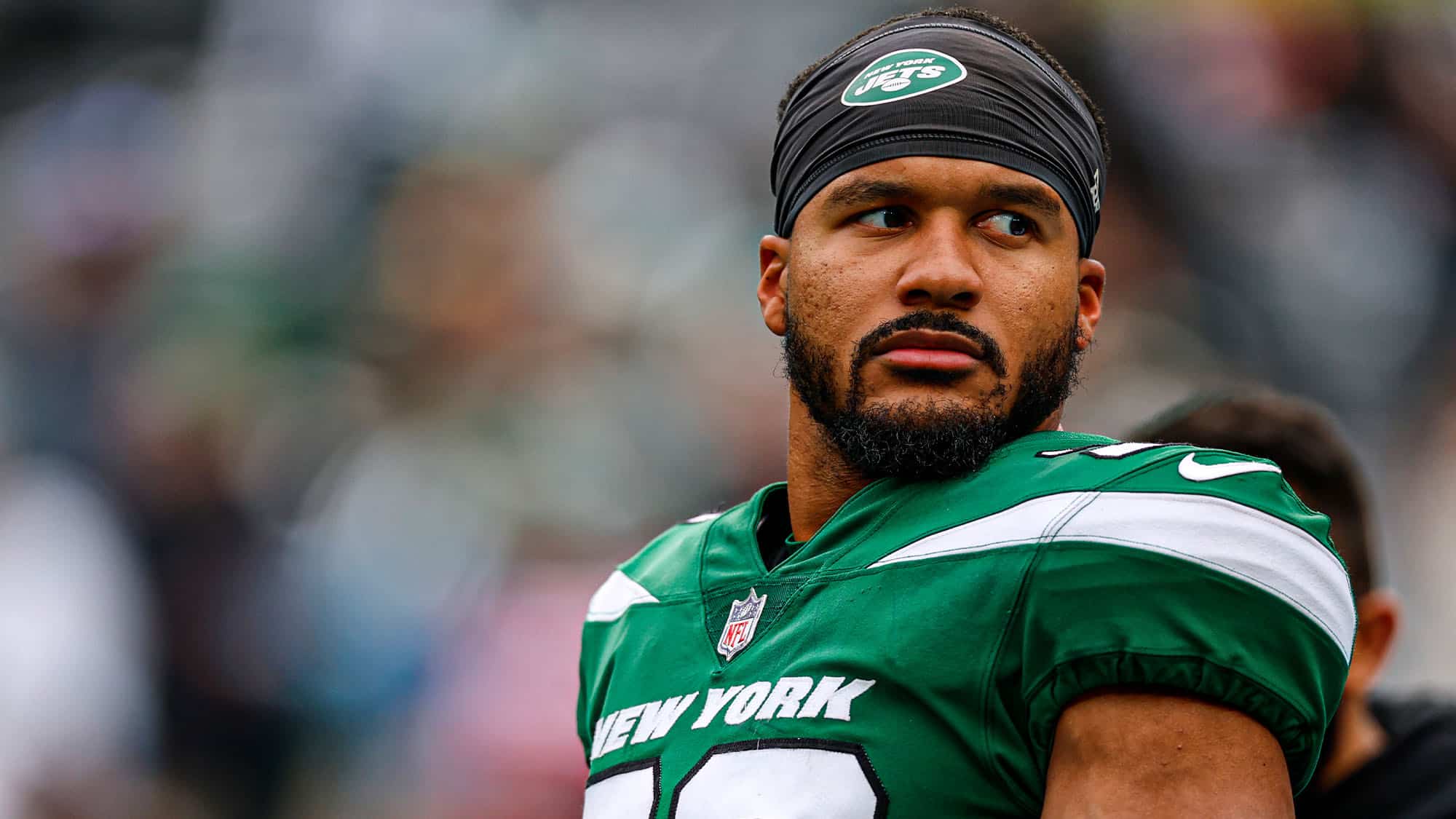
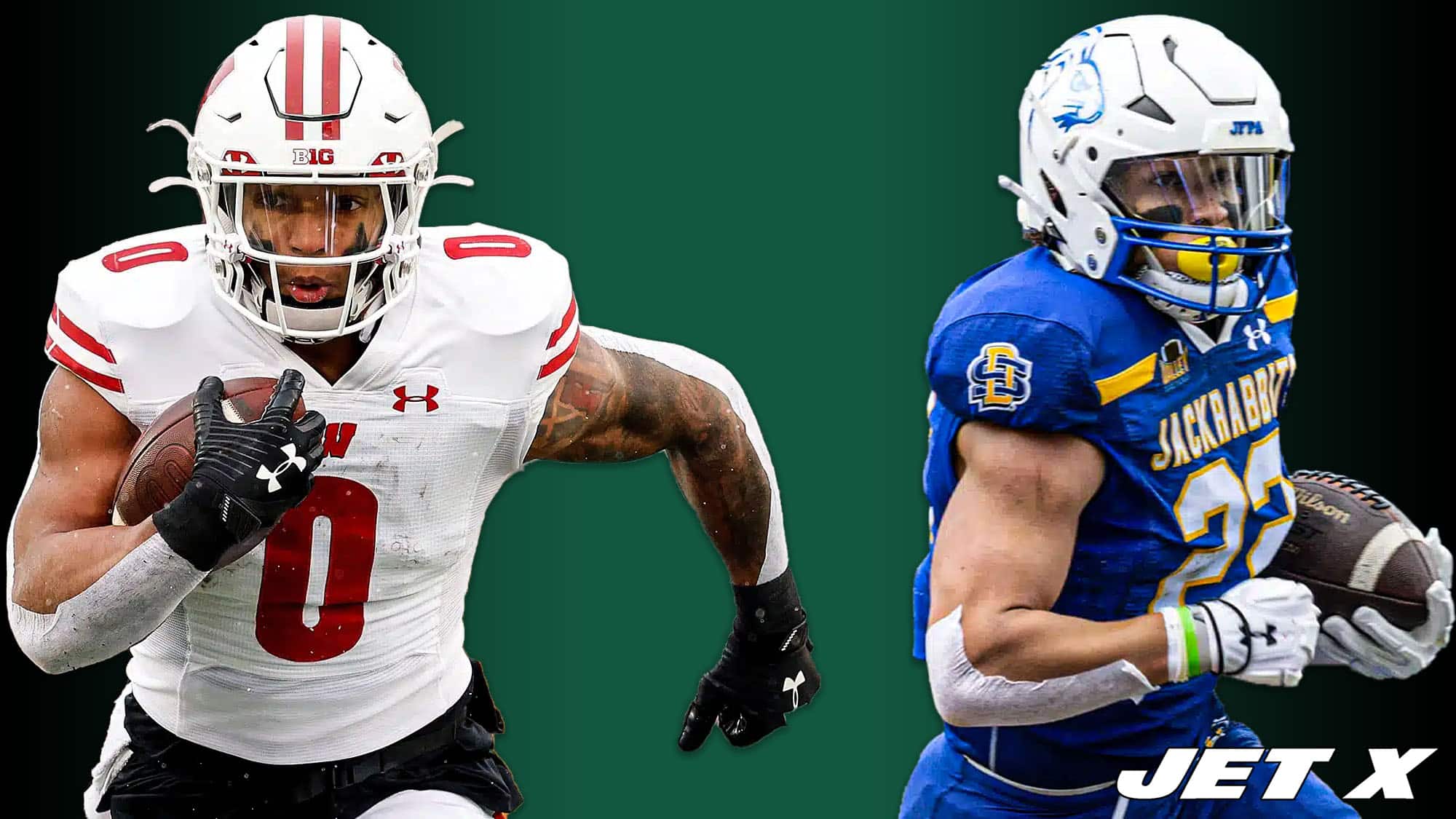


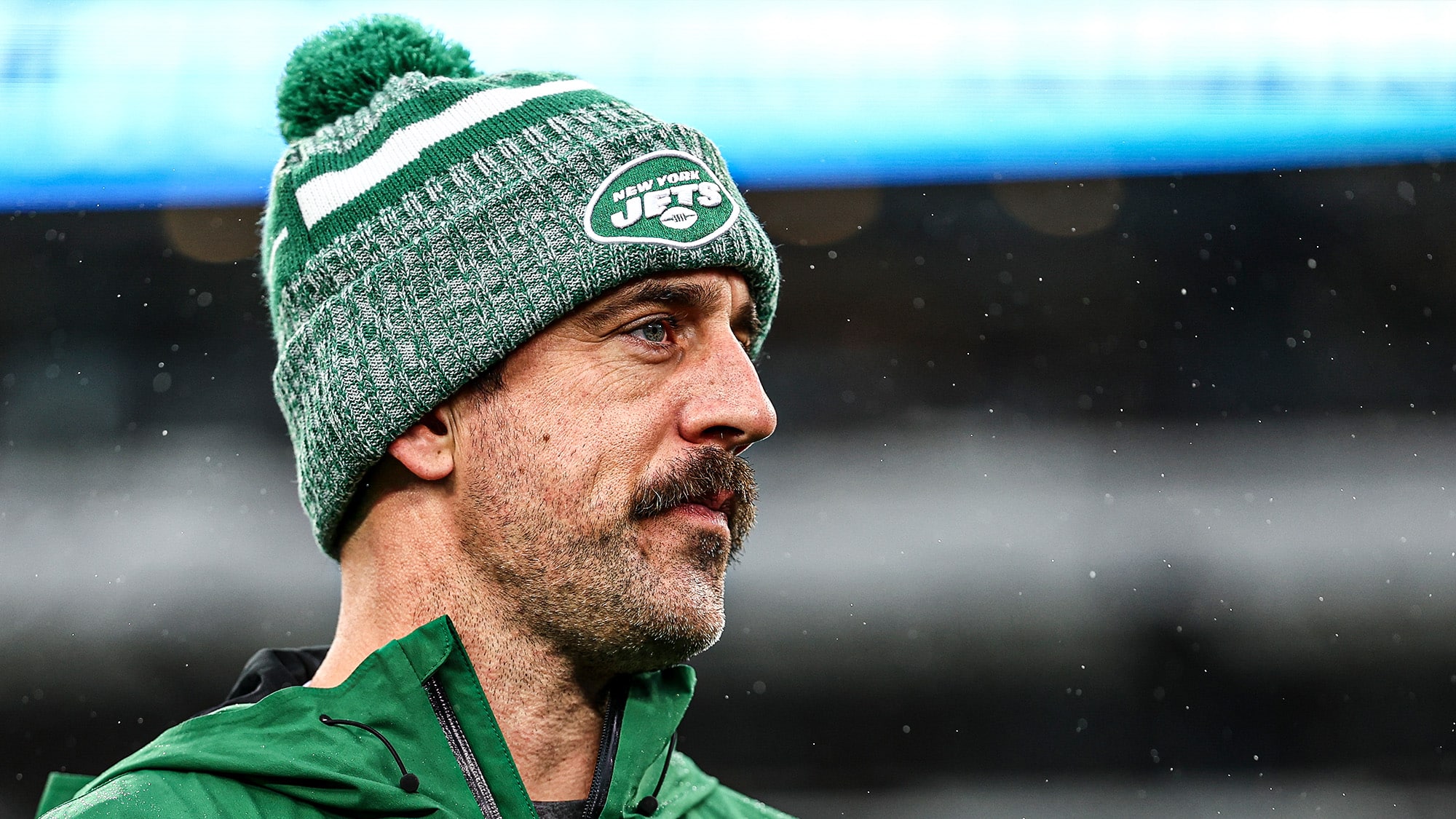
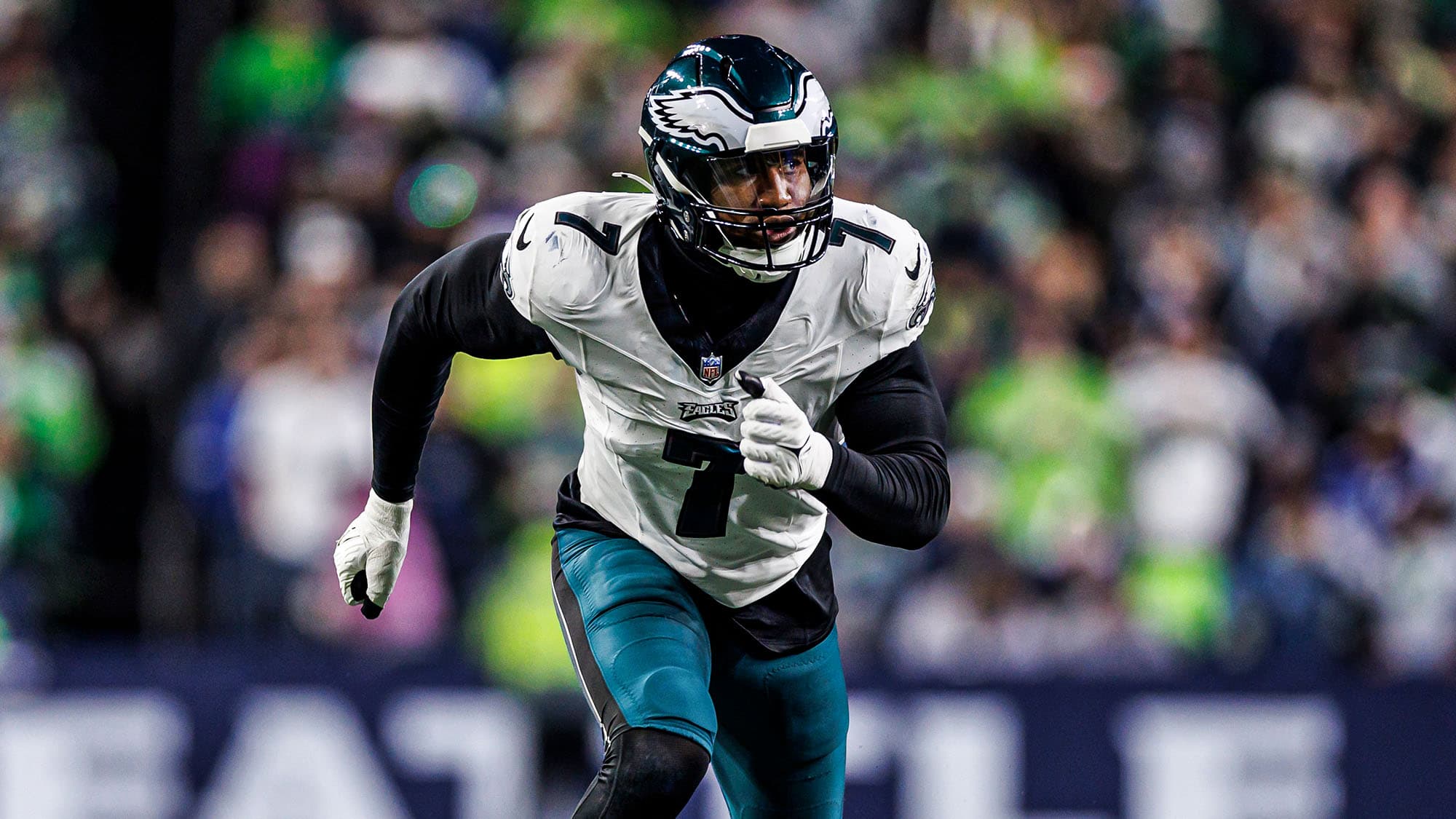
Solid final arguments. I can see why a WR but if its not one of the top 2, I’m pretty adamant that it must be Tackle as long as its a top ones that they want. Blewett made the point on his pod that are you beating the chiefs without that high end 2wr. Yes, you went blow for blow with them with zach and lazard as 2wr. I think a tyron injury, which is likely, and a shit replacement for him will wreck your entire offense. No time to throw and no way to run in that direction, not to mention your 40 yr old qb getting crushed. And the possible wrs after draft are much better than the possible OTs. CD still possible or a trade. Bakhtiari is not a sure bet. Hes an all pro, tough to see him sign as a backup, though not sure of his current options. I think Tackle is much harder to find nowadays, for this year and going forward. While they have the premium pick, get the Tackle. Imo. My final guess is itll be Alt.
Your thinking is solid and makes total sense, can’t argue it, but I still think the “best player” makes the most sense. I know people hate that but I’ve never subscribed to “luxury pick” theories. What does that mean exactly? It’s like saying you can have too many good players.
I am in agreement that losing Smith is doom, but this draft isn’t the last chance for them to add a quality backup. As Jets’ fans we are scarred, no team has 2 starting caliber LT’s on their roster.
It’s a tough call.
Yea, i also cant argue against best player. Thats an ozzie newsome staple that certainly worked for baltimore. A luxury today is a need tomorrow.
I’m in the OT first WR later camp too for the same reasons as you. BPA can’t be purely BPA – it has to be qualified to some extent by the state of your roster. The Chiefs won’t take a QB if he’s the BPA.
No they would trade the pick. I think the Colts want Bowers, Moving back to 15 and getting another pick would be ideal.
Oh yea, totally, imo. Bpa to me im assuming by that teams board which would have their needs dialed in. Also with a top 10 pick i think the general rule would be it has to be a premium position. Qb, edge, ot, cb, wr. No rb, te, safety, center. I guess there can be exceptions but that team better be in position to take that k8nd of risk. Also, I guess nowadays maybe a Guard is possibly considered premium? Not sure. But i know their prices have gone up, theyre needed to combat the chris jones’s, and we see what an elite G can do for the team, avt, imo.
I have been thinking if the Jets cannot get the future OT in this draft, I may have to give up on this team rather than lose my mind after almost 60 years of forlorn fandom. I would agree with those who think that if a sure fire OT is not available at 10, if 3 QBs and 3 WR do not go before we pick, a WR is the best fallback. My question is this: Why are all the experts picking the Jets taking Bowers. Is this more of rooting for the Jets to pick stupidly and fail? Is this hoping the likely injury to a starting OT results in the end of the Jets season? Rather than just get angry at reporters who repeatedly root for the Jets to sign Dalvin Cook and Brock, well after intelligent insight on this website as to why the moves are stupid, and being proved right, I would like to know what all you young whippersnappers think.
Not quite a young whippersnapper, and have been feeling Jets’ pain since it rained that fateful day in Miami (if you know you know haha).
I don’t think Bowers is a “stupid pick” he’s loaded with talent and is head and shoulders above the rest of the players at his position, so taking the best player at a position vs. the second or third best at a position does make sense. Add to that Bowers does show game changing potential and I am on board for him, however it wouldn’t be MY first choice.
Jets’ fans are a bit scarred by OL injuries so I do believe it clouds our judgement. None of us will sleep at night until they have a full compliment of starting offensive lineman AND a starting caliber player to back up each position for November and December so we aren’t playing guys off some other team’s practice squad. The reality is no team has two starting caliber OT’s or OG’s or C’s, it’s just not realistic, now I know this situation is different based on the injury history of the starters but pick 10 isn’t the ONLY way to get a young backup.
They can still trade back into round 1 or 2 if a guy they like is there, maybe Guyton, or Patrick Paul, or even Rosengarten. There are versatile players like Graham Barton, Dominic Puni that should be available later.
One thing about this year’s draft coverage is it’s hyper focused. It’s all 4 QB’s or OL’s…Alt, Fashanu, Fautanu, Fuagu, JC Latham, WR’s Harrison, Nabers, or Odunze…barely hear anything about the defensive guys, so I think maybe our focus is too narrow. Who’s to say they can’t find a offensive line starter later in the draft?
My warning to Jets’ fans is not to overreact to ONE pick, like we did when the Jets “DID NOTHING” the first day of free agency.
Personally, at 10, I’d take Fautanu if I had to pick, but my preference would be to trade back with the Colts at 15. I saw somewhere the “value chart” (if that is still a thing) Jets could trade 10 & 73 for 15, 43 & 117. I’m in for that IF POSSIBLE. Of course we all have our own opinions.